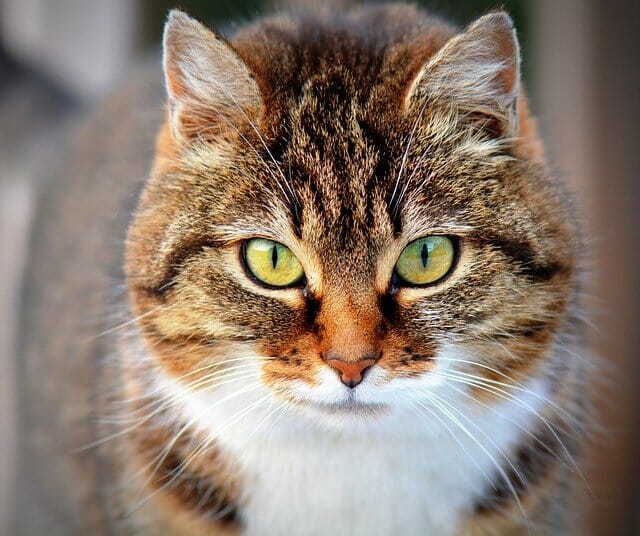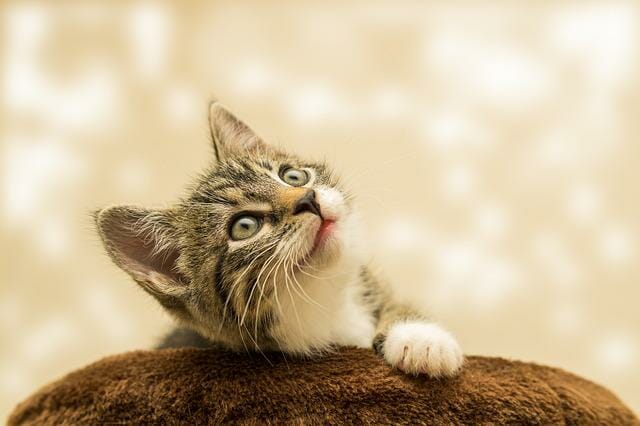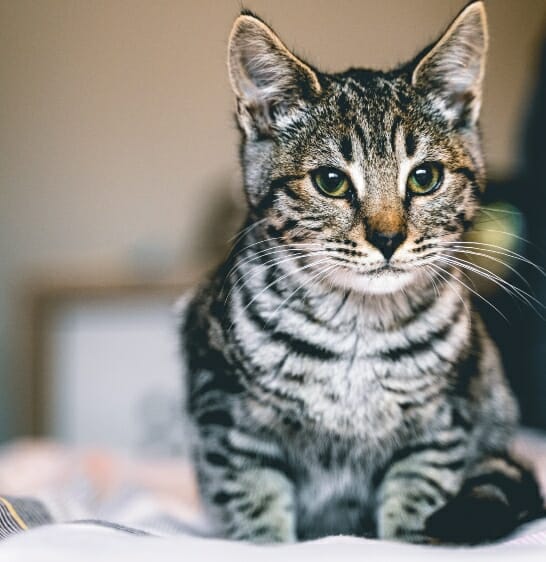Do Cats See Color: A Comparison of the Cat and Human Vision
Yes, cats can see some colors, but their color vision is less extensive than humans. For example, the retina of a cat’s eye contains rod and cone cells, similar to humans, but they have fewer cones than humans, responsible for detecting color.
Cats are dichromatic, meaning they have two types of cone cells that allow them to see colors within the blue and green spectrums but cannot see colors in the red spectrum. Therefore, cats cannot distinguish between red, orange, and brown colors and may perceive them as shades of grey or blue.


Table of Contents
Similarities Between Human and Cat Vision
Retina
The retina is the light-sensitive layer of tissue at the back of the eye that contains photoreceptor cells called rods and cones. These cells detect light and send visual information to the brain. Both cats and humans have a similar retina structure, one of the main similarities in their visual systems.
Both cats and humans have two types of photoreceptor cells in the retina, called rods and cones. Rods detect light levels and movement in dim light conditions, while cones are the reason for color and detailed vision in brighter conditions.
The distribution of rods and cones in the retina is not uniform in cats and humans. In the central part of the retina, called the fovea, there are mostly cone cells responsible for detailed vision. In the peripheral areas of the retina, there are more rod cells, which are more sensitive to low levels of light.
The optic nerve is a bundle of nerve fibers that delivers visual information from the retina to the brain. In cats and humans, the optic nerve is located at the back of the eye and connects to the brain at the optic chiasm, where visual information from both eyes is combined.
Binocular Vision
Binocular vision uses both eyes simultaneously to perceive depth and three-dimensional space. Both cats and humans have binocular vision, although there are differences in how it is achieved.
Both cats and humans have overlapping visual fields, which means there is an area of space that both eyes can see simultaneously. This is important for depth perception, as the brain can use the differences in the images each eye receives to calculate the distance to objects.
In both cats and humans, neurons in the visual cortex respond specifically to information from both eyes. These neurons are called binocular neurons and are important for integrating the information received from each eye to create a single, three-dimensional image.
Stereopsis is the ability to perceive depth based on the differences in the images received by each eye. For example, cats and humans can perceive depth using stereopsis, although the degree to which it is used may vary depending on the task.
Both cats and humans can also move their eyes independently of each other, allowing them to track moving objects and maintain binocular vision even when the head is moving.
The optic chiasm is where the optic nerves from each eye come together and cross over to the opposite side of the brain. In cats and humans, this structure is important for integrating the information from both eyes and creating a unified visual experience.
Differences Between Human and Cat Vision
Color Vision
The color vision of cats and humans differs in several ways. First, cats have fewer types of cone cells in their retinas than humans, meaning they have a more limited range of color vision.


Humans have three types of cone cells in their retinas, each sensitive to a different range of wavelengths of light. These cones allow humans to perceive various colors, from red to violet.
On the other hand, cats have only two types of cone cells in their retinas, which are sensitive to blue and green wavelengths of light. They do not have cone cells sensitive to red wavelengths, meaning they cannot see reds and oranges as distinctly as humans can.
Because cats have fewer types of cone cells than humans, their ability to perceive different colors is more limited. As a result, they have a reduced ability to discriminate between colors.
Night Vision
Cats have excellent night vision, and the differences between cat and human night vision are largely related to the differences in the structure and function of their eyes.
Rod cells are photoreceptor cells in the retina that detect low light levels. Cats have a much higher density of rod cells in their retinas than humans, which means they are much more sensitive to light in low-light conditions. This allows them to see much better in dimly lit environments than humans.
The tapetum lucidum is a layer behind the retina in many animals, including cats. This layer reflects light through the retina, enhancing the rod cells’ sensitivity and allowing the animal to see better in low-light conditions. Humans do not have a tapetum lucidum, meaning they cannot see as well in low-light conditions as cats.
Cats also have larger pupils than humans, which allows more light to enter the eye in low-light conditions. In bright light conditions, the pupils of cats can contract to smaller sizes to reduce the amount of light entering the eye, which helps to protect the sensitive rod cells from damage.
Visual Acuity
Visual acuity is the ability to see fine details clearly, one of the most important aspects of vision. The fovea is a small, central retina region responsible for our highest visual acuity.


Humans have a much larger and more developed fovea than cats, meaning they can see fine details more clearly. For example, the fovea in human eyes contains a higher concentration of cone cells, whionsible for color vision and high visual acuity.
The retina is the layer of cells at the back of the eye responsible for processing visual information. In humans, the cells in the retina are arranged in a single, uniform layer, which allows for more precise processing of visual information. In contrast, cats have a thicker retina with cells arranged in several layers, which can cause distortion and loss of detail.
The size of the eye can also affect visual acuity. Cats have relatively large eyes compared to their body size, which allows them to capture more light and see more detail in their environment. However, the larger eye size can also lead to some distortion and loss of detail, especially at the periphery of the visual field.
The way that the eye focuses on objects can also affect visual acuity. For example, humans can change the shape of the lens in the eye to focus on objects at different distances, which allows for sharp vision at different distances. Conversely, cats have a more fixed focus and rely on moving their head or body to adjust their visual field and focus on objects.
